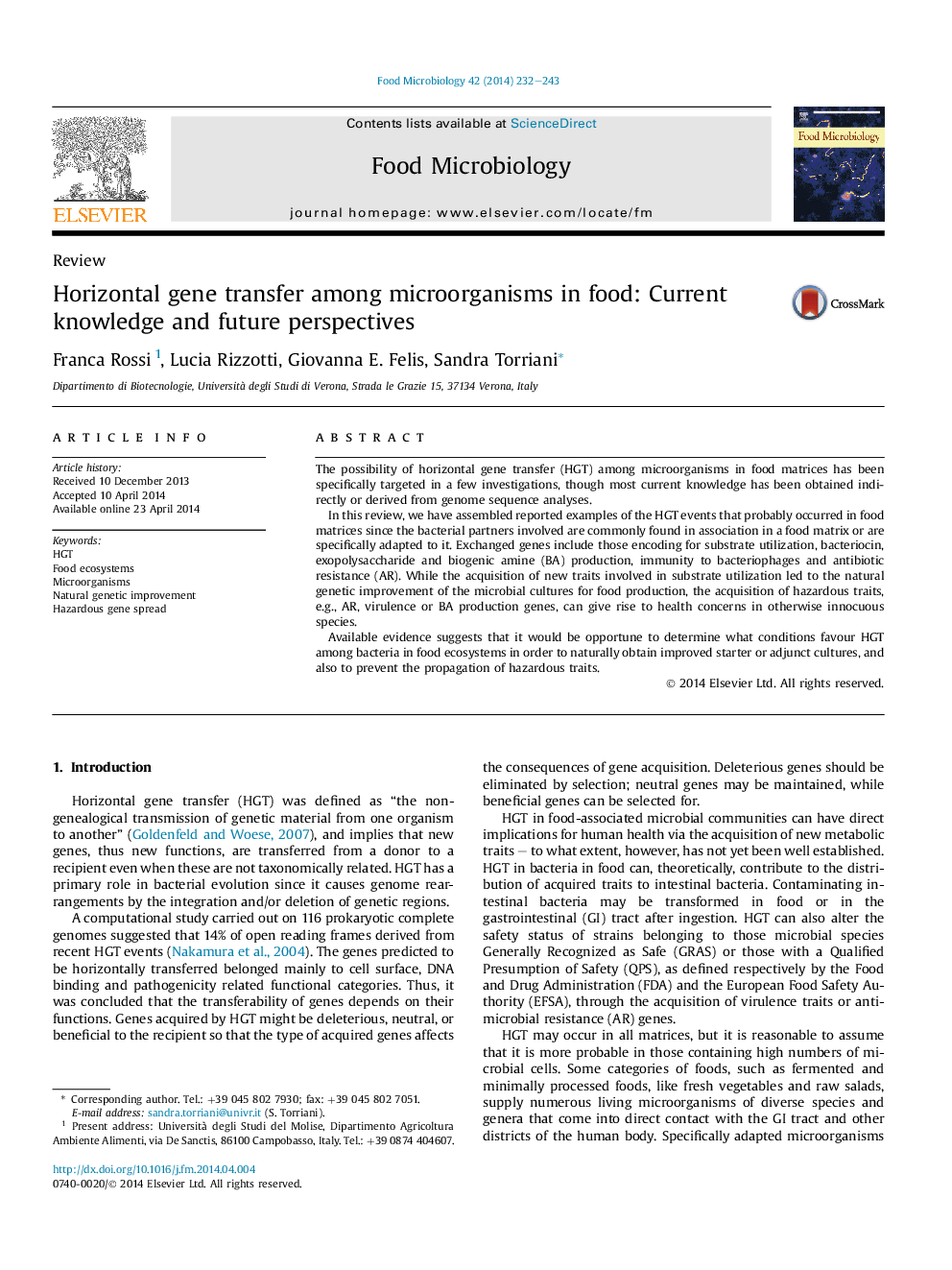| Article ID | Journal | Published Year | Pages | File Type |
|---|---|---|---|---|
| 4362907 | Food Microbiology | 2014 | 12 Pages |
•Genome sequence data show that HGT favoured bacterial adaptation to food ecosystems.•Some functional groups of genes are more prone to HGT in food.•Toxin producing biotypes might emerge after HGT in food from innocuous strains.•More studies are needed to define the consequences of HGT in food.
The possibility of horizontal gene transfer (HGT) among microorganisms in food matrices has been specifically targeted in a few investigations, though most current knowledge has been obtained indirectly or derived from genome sequence analyses.In this review, we have assembled reported examples of the HGT events that probably occurred in food matrices since the bacterial partners involved are commonly found in association in a food matrix or are specifically adapted to it. Exchanged genes include those encoding for substrate utilization, bacteriocin, exopolysaccharide and biogenic amine (BA) production, immunity to bacteriophages and antibiotic resistance (AR). While the acquisition of new traits involved in substrate utilization led to the natural genetic improvement of the microbial cultures for food production, the acquisition of hazardous traits, e.g., AR, virulence or BA production genes, can give rise to health concerns in otherwise innocuous species.Available evidence suggests that it would be opportune to determine what conditions favour HGT among bacteria in food ecosystems in order to naturally obtain improved starter or adjunct cultures, and also to prevent the propagation of hazardous traits.
